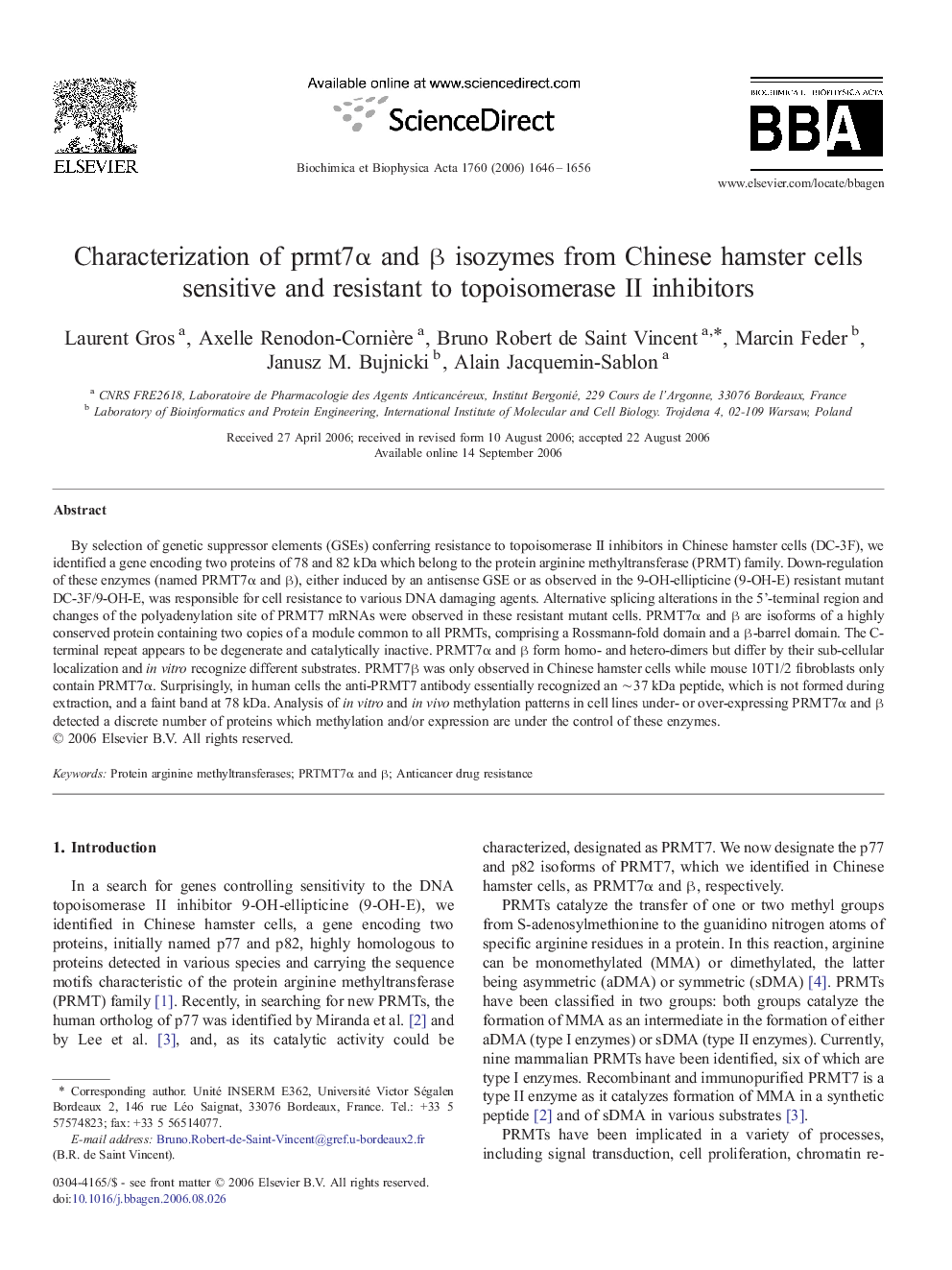| Article ID | Journal | Published Year | Pages | File Type |
|---|---|---|---|---|
| 1948704 | Biochimica et Biophysica Acta (BBA) - General Subjects | 2006 | 11 Pages |
By selection of genetic suppressor elements (GSEs) conferring resistance to topoisomerase II inhibitors in Chinese hamster cells (DC-3F), we identified a gene encoding two proteins of 78 and 82 kDa which belong to the protein arginine methyltransferase (PRMT) family. Down-regulation of these enzymes (named PRMT7α and β), either induced by an antisense GSE or as observed in the 9-OH-ellipticine (9-OH-E) resistant mutant DC-3F/9-OH-E, was responsible for cell resistance to various DNA damaging agents. Alternative splicing alterations in the 5'-terminal region and changes of the polyadenylation site of PRMT7 mRNAs were observed in these resistant mutant cells. PRMT7α and β are isoforms of a highly conserved protein containing two copies of a module common to all PRMTs, comprising a Rossmann-fold domain and a β-barrel domain. The C-terminal repeat appears to be degenerate and catalytically inactive. PRMT7α and β form homo- and hetero-dimers but differ by their sub-cellular localization and in vitro recognize different substrates. PRMT7β was only observed in Chinese hamster cells while mouse 10T1/2 fibroblasts only contain PRMT7α. Surprisingly, in human cells the anti-PRMT7 antibody essentially recognized an ∼ 37 kDa peptide, which is not formed during extraction, and a faint band at 78 kDa. Analysis of in vitro and in vivo methylation patterns in cell lines under- or over-expressing PRMT7α and β detected a discrete number of proteins which methylation and/or expression are under the control of these enzymes.
